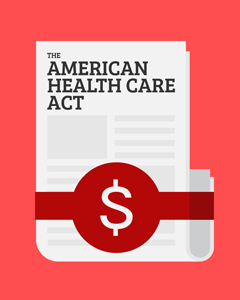Group insurance expert reveals what Americans can expect
 President Trump’s American Healthcare Act is under ever-increasing scrutiny from politicians and pundits alike. However, misunderstandings and oversights have been rife when it comes to the way many Americans talk about the Republican healthcare bill, says Rob Wilson, group health insurance expert and President of Employco USA.
President Trump’s American Healthcare Act is under ever-increasing scrutiny from politicians and pundits alike. However, misunderstandings and oversights have been rife when it comes to the way many Americans talk about the Republican healthcare bill, says Rob Wilson, group health insurance expert and President of Employco USA.
Here, Wilson identifies key part parts of ‘Trumpcare’ which he believes are important for Americans to become aware of:
- Elimination of the employer and individual mandates: “It will no longer be a requirement for anyone (such as young, healthy people) to have for health insurance. And, the elimination of penalties means that they will not be penalized if they decide if they would rather spend their hard-earned money elsewhere.”
- A 30% surcharge to premium cost for lapse of coverage over 60 days: “This will allow insurers to charge people who drop in and out of the market, which will help to keep costs fair and encourage people to keep their health insurance intact.”
- Repeal tax on over-the-counter medicine: “This will be a nice boon for consumers.”
- Repeal of tax increase on Health Savings Accounts and increase in maximum contribution for HSA accounts: “This will remove the excess penalty if Americans need to use their HSA for costs other than healthcare bills, and the increase in max contributions will also offer tax benefits for Americans, as these funds are 100 percent tax-deductible.”
- Repeal of Medical Device Excise Tax: “A $20 billion tax cut, this will help to increase lower costs for manufacturers and breathe life back into states such as Indiana where medical device manufacturing is a multi-billion dollar industry.”
- Repeal of increased Medicare tax: “Removing the 0.9% Medicare payroll tax on any money Americans earn above $250,000 will be a relief for many Americans.”
- Repeal of tax on Prescription Medications: “This will amount to a $28 billion tax cut,” he says. “It will lessen the burden on Americans who purchase prescriptions each month, and it will allow drug companies to spend more money on research, production and development of medications.”
- Repeal of Tanning Tax: “That 10 percent federal tanning tax is going away,” says Wilson.
- Cadillac tax would not go in to effect until Dec 31, 2025: “The astronomical tax is now being delayed until 2025, which will lift a huge burden on consumers.”
 Many Americans are upset that older people are going to face a ‘age penalty’ under President Trump’s healthcare plan, but not everyone sees the situation as problematic. In fact, some experts think that it won’t be the unfair cost that Americans fear it will be.
Many Americans are upset that older people are going to face a ‘age penalty’ under President Trump’s healthcare plan, but not everyone sees the situation as problematic. In fact, some experts think that it won’t be the unfair cost that Americans fear it will be.
